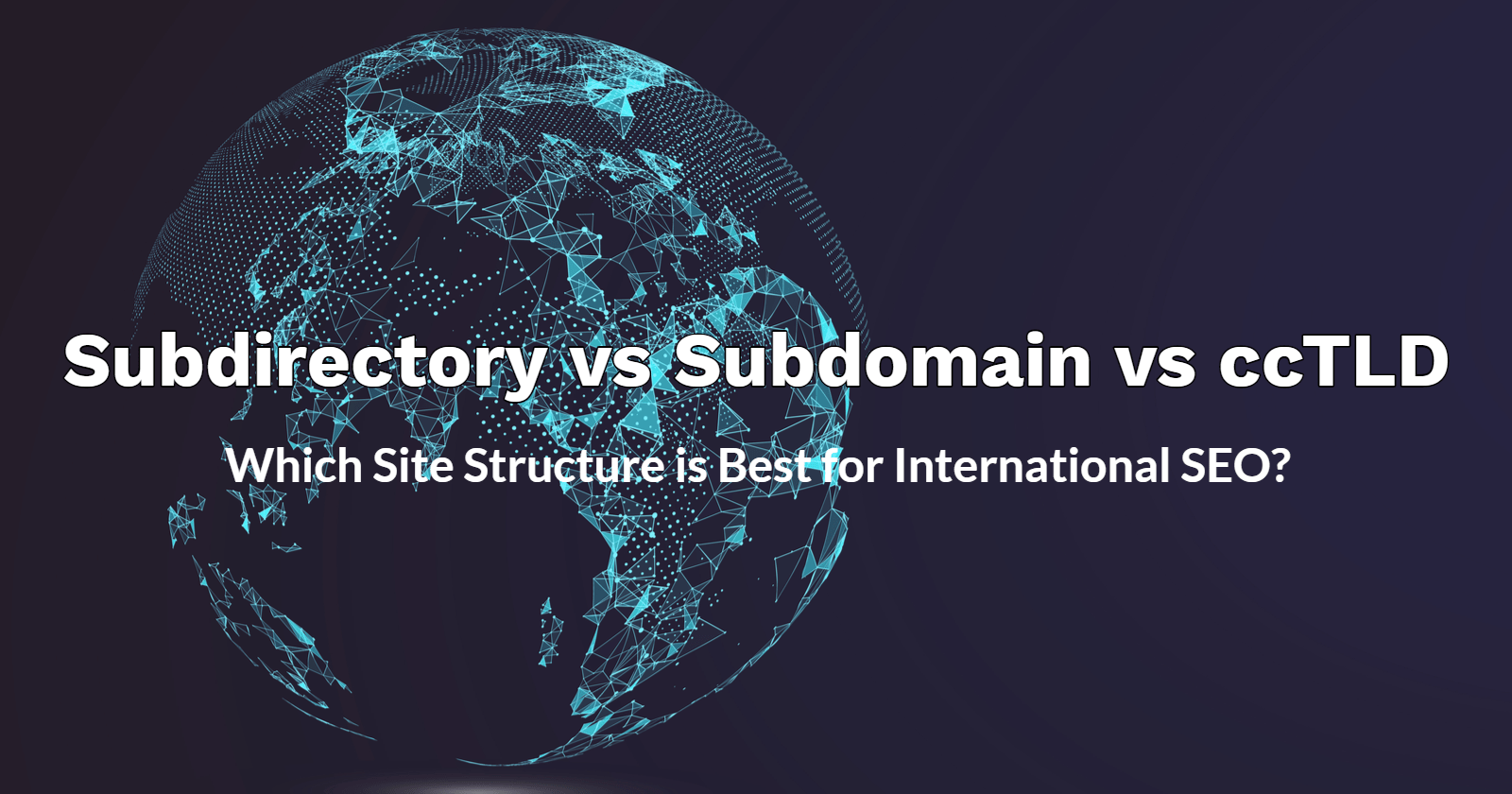If you have been an SEO practitioner for a bit of time and feel that you aren’t learning as much as you used to, it might be time to start think broader and try your hand at international SEO.
Managing SEO for a global audience isn’t applicable for many smaller websites, but if you have the kind of product or content that can transcend borders and languages, then there might be some sizable growth to be achieved by focusing on users from other countries.
As you begin to focus on other countries and locales, you should first focus on the low hanging fruit like translations and currency conversions rather than creating native content.
From my experience, just making your product available in other languages without any other changes can lead to significant traffic and revenue growth as searchers in that new language find your site.
Adding these new translations and pricing experiences, while seemingly simple, will actually require you to make some complex site architecture decisions.
You want to be certain that users from your primary country won’t accidentally stumble on your new translations and pricing while navigating your site. At the same time, you do not want to impact your search presence on Google with having your translations outrank your primary content.
Essentially, you need to have a defined architecture that makes clear what content and pages belong to each language or country.
Subdirectory vs. Subdomain vs. ccTLD
The decision about how to structure your website is, one that up until now, generally has a consensus on best practices. However, this might be different for the future.
Most international SEO experts recommend that a site consider the use of a subdirectory for different languages (example.com/fr); however, if one can afford the financial and technical cost, a country code top-level domain, or ccTLD, (example.co.uk) would be desirable.
Having had the experience of rolling out ccTLDs in multiple languages, I might have continued to echo that advice.
However, I recently stumbled upon a discovery where that Google seemed to do the opposite of what they recommend in their Webmaster Help Center with regards to ccTLDs.
I blogged in more detail about this ccTLD discovery here, but in short, a Twitter conversation with Google’s John Mueller about ccTLD being outranked by .com in the UK elicited the following response.
That can happen when we fold the versions together (usually if it’s the same content). Having unique content & hreflang links help. Since local traffic isn’t certain, I’d also consider a subtle banner when you spot people from the wrong “locale”.
— John ☆.o(≧▽≦)o.☆ (@JohnMu) November 28, 2017
Given this feedback from Google, whenever content is duplicate to the primary domain the ccTLD will likely lose the automatic ranking factor it should have from matching the domain to a Google searchers location.
As a result, it’s time to reconsider best practices on how to structure a site for international SEO.
ccTLD
A ccTLD likely still makes sense for common languages where only one country speaks that language (e.g., Russia, Israel, any of the Scandinavian countries).
A ccTLD also makes sense if there are specific legal requirements which require a local domain to conduct business, China would be the most prominent example of this where it’s very difficult to rank on Baidu without a .cn TLD.
For all other countries where the commonly spoken language is the same as another language, the ccTLD might not be worth the effort.
Implementing ccTLDs can be very expensive and technically challenging, and now there’s no guarantee that the right search audience will even see the TLD. (You can use HREFLANG, but HREFLANG should not be required for ccTLD’s as it’s a duplicate signal on localization.)
It would be extremely disappointing to go through the effort and expense of building out TLDs and then have Google rank the wrong one.
With ccTLDs no longer on the recommended list for common languages, it certainly would not make sense to use a gTLD that rolls up multiple languages as there likely wouldn’t be a user preference for say a .ASIA or .EU vs a .com.
Additionally, having that new domain would mean that SEO efforts need to be split off to a different property, and you would still have the technical challenges of building out user routing to have the right users see that domain.
Subdomains
With ccTLDs no longer the best option, the next possibility worth exploring is subdomains (e.g., uk.example.com).
Subdomains for any purposes have never been on the SEO recommended list as their cons typically outweigh all of the pros.
On the positive side for SEO, it allows you to build out specific languages or country instances targeting users.
You can even use separate IP addresses or hosts which make it easier if you are using any sort of off platform translation tool.
However, on the negative side for SEO, a subdomain would, in many cases, be viewed by Google as a new domain requiring the need to build SEO from scratch. You can’t rely on the SEO brand of the root or www domain.
Furthermore, if there are any duplicate content conflicts on a pricing page as an example, the root domain will likely win out.
Subdirectories
Finally, this leaves us subdirectories as an option.
From an implementation perspective, subdirectories are the easiest to roll out as they are just another folder on the site.
For Google, subdirectories also get a running start as they inherit all of the brand and ranking value of the root domain. You can even track subdirectories individually in Google Search Console and Google Analytics.
The only real downside is you lose some of the local appearance in search results; however, at least on mobile, I have even seen ccTLDs look like they are subdirectories in Google results.
There is still the challenge of the wrong page showing up in search, but this is an issue in whichever way you structure your site.
 The actual URL of this result is on .co.uk, but Google makes it look like a subdirectory
The actual URL of this result is on .co.uk, but Google makes it look like a subdirectoryConclusion
To recap, if this current Google paradigm holds true, ccTLDs have lost nearly all of their appeal. Therefore, when it comes to making a decision of ccTLD vs subdomain vs subdirectory, there is hardly ever a reason to choose anything but a subdirectory.
A subdirectory will rank the fastest and is the choice of many large enterprise multinational websites (e.g., Apple, Samsung, HP).
One final note: when making the decision of what names to choose for the subdirectories, be sure to use common ISO language or country codes like UK for the UK or ES for Spanish, so Google can easily recognize the targeting.
More International SEO Resources Here:
- An Introduction to International SEO
- What Are The Best Practices in Creating Spanish Versions of Websites?
- Tackling International SEO Challenges
Image Credits
Screenshots taken by Eli Schwartz, December 2017





![[SEO, PPC & Attribution] Unlocking The Power Of Offline Marketing In A Digital World](https://www.searchenginejournal.com/wp-content/uploads/2025/03/sidebar1x-534.png)